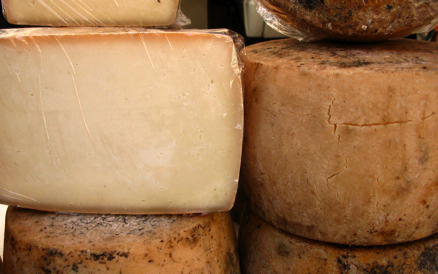Pecorino, desired
Our intern Simone proves to be a true foodie, her by now Tuscan tastes have her dreaming of pecorino while feeling under the weather…
One week after I was struck down by the stomach flu, I am finally seeming to make a full recovery. That being said, this past week has hardly given me the opportunity to write the article I intended about different aperitivo places around the city since my stomach refused to handle anything besides bananas, vegetable broth, and crackers, bleh. Despite my stomach pains, I found myself craving the things I knew they would not help my situation, particularly cheese. Unable to eat it, I could at least write about it. Coming from a foodie family that drives 45 minutes to do our grocery shopping at a traditional, fresh food, Italian market, I was familiar with Pecorino cheese before I arrived in Florence. I loved it sliced in my salads, grated into omelets with vegetables, on open faced sandwiches with avocado and tomato, and just by itself maybe with a cracker or two. There really was no way to go wrong with pecorino since it comes in all different textures from almost spreadable to very hard and crumbly and varies in flavor from surprisingly mild to very sharp. What I did not know is what a staple it is here in Tuscany. On almost every menu you can find “mixed pecorino cheeses”, usually accompanied by honey (an amazing discovery!). Every cheese has a role but pecorino is the only one that stands on its own. So since it’s such an important cheese to Tuscan cuisine I wanted to know more.
Looking into the history of pecorino cheese I found that it is a sheep’s milk cheese and gets its name from the Italian word pecora, which means, sheep. Pecorino began first in Rome which was then surrounded by countryside full of grazing sheep and their monopoly on salt after winning the Punic Wars, made the cost of making cheese in Rome low. Pecorino production remained native to Rome until 1884 when high taxes on salt caused law officials to ban the salting of cheeses in Rome. Thus, Pecorino production moved to the island of Sardinia.
After World War II, many Italians abandoned their homes, farms, and factories, moving away from the ravaged Tuscan land and others, notably Sardinians, moved to Tuscany to pick up the pieces. The Sardinians brought along their sheep and their cheese making methods and that is how pecorino cheese landed in Tuscany.
An article in Native Food and Wine taught me how it is a “cooked cheese” and that sheep’s milk is used to create fresh, medium-aged, and aged pecorino, as well as ricotta.
Well I certainly can’t eat it now but I will definitely appreciate my first taste of pecorino post-stomach bug even more than I would have when I am finally able to have it!
